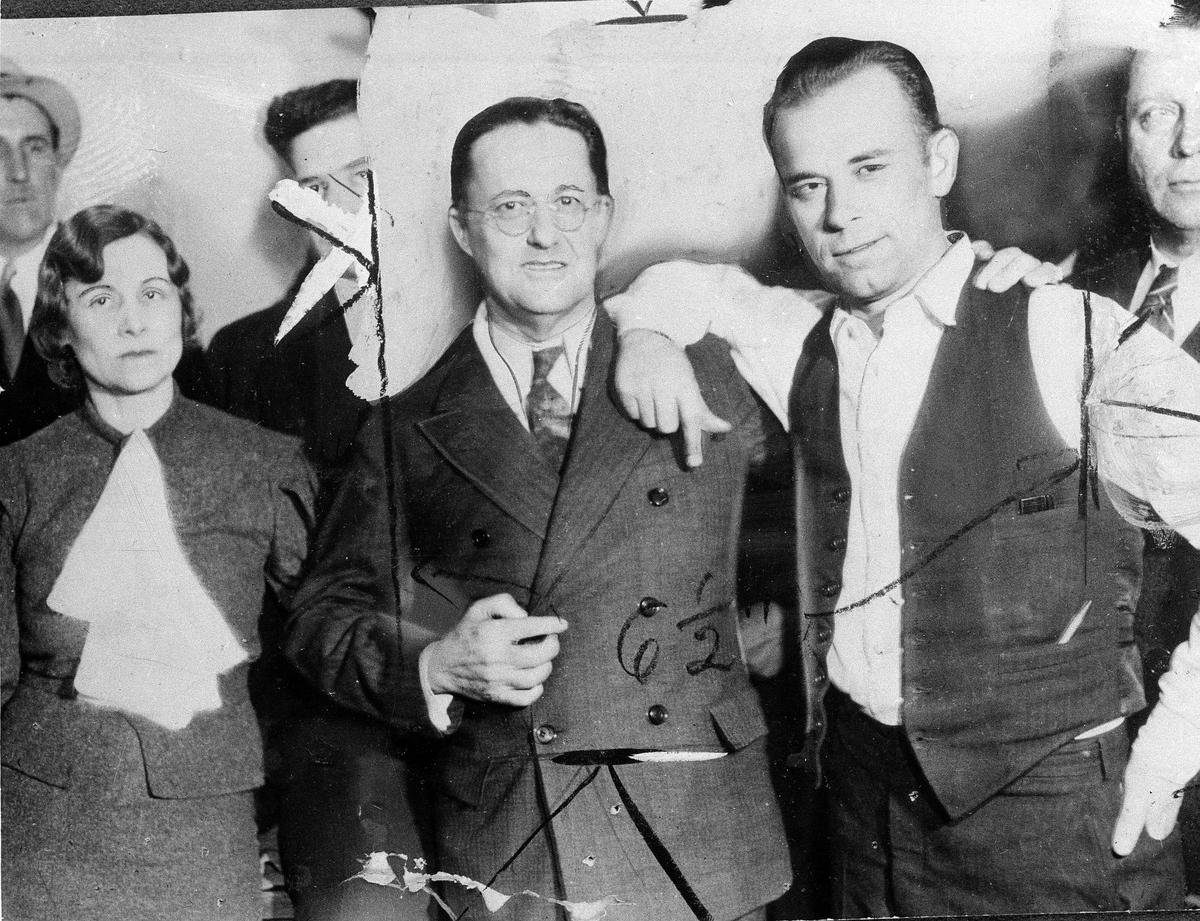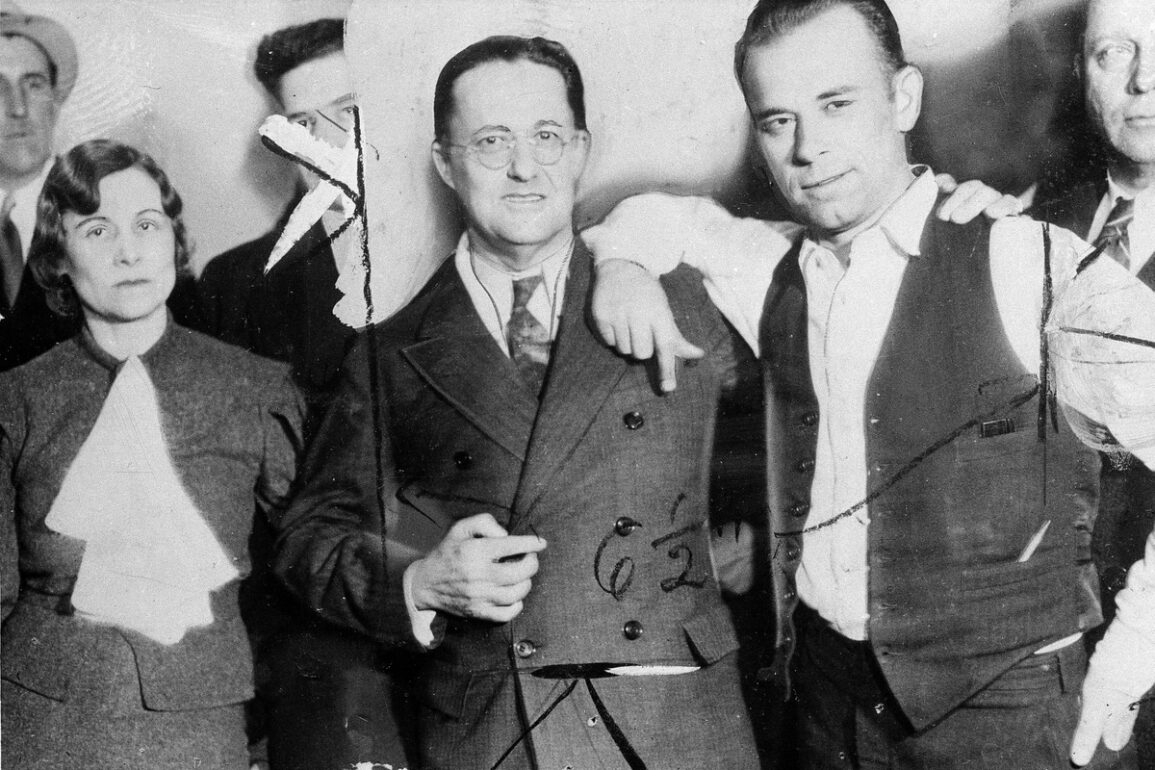
Friday, May 23, 2025 | 2 a.m.
Editor’s note: “Behind the News” is the product of Sun staff assisted by the Sun’s AI lab, which includesa variety of tools such as Anthropic’s Claude, Perplexity AI, Google Gemini and ChatGPT.
American jail and prison escapes have long captured the public imagination, blending real danger with elements of ingenuity, desperation and sometimes even dark humor — like the New Orleans escape, which occurred early May 16, where graffiti taunted “To Easy LoL” above the exit hole.
Five of the 10 fugitives had been caught by authorities as of Tuesday. Officials have underscored multiple security lapses in the escape, including ineffective cell locks and the fact that the inmates got out when the lone guard monitoring them went to get food.
The history of these breakouts is marked by both spectacular successes and many more failures, reflecting not just flaws in security, but also society’s enduring fascination with those who defy confinement.
Notable and elaborate escapes
Some of the most famous escapes in U.S. history include:
- John Dillinger (1934): Escaped the “escape-proof” Lake County jail in Crown Point, Ind., using a fake gun carved from wood and blackened with shoe polish. Despite extra guards and national attention, Dillinger managed to walk out, cementing his legend[1].
- Escape from Alcatraz (1962): Frank Morris and the Anglin brothers used dummy heads, handmade tools and a raft of raincoats to vanish from the island prison. Their fate remains unknown, adding to the mystique[2,3].
- Ted Bundy (1977): Escaped twice — once by jumping from a courthouse window and again by squeezing through a hole in his cell ceiling after losing weight to fit. During his time on the run, he committed additional murders[2,3].
- Clinton Correctional Facility, Dannemora, N.Y. (2015): Richard Matt and David Sweat, aided by a prison employee, used smuggled tools to cut through their cells, crawl through tunnels and escape via a manhole. Matt was killed after three weeks; Sweat was recaptured two days later[2,4].
- Danelo Cavalcante (2023): Used a crab-walk maneuver to scale walls and escape Chester County Prison in Pennsylvania. He was on the run for nearly two weeks, stealing vehicles and a rifle before being captured with the help of a tactical team and a police dog[2,6].
How escapees stay on the run
Inmates who manage to evade capture for an extended period typically do so through a combination of:
- Meticulous planning: Successful escapees often spend significant time observing prison routines, staff habits and security weaknesses. They study guard shifts, identify blind spots and plan their escape for moments of minimal supervision[5,6].
- Exploiting security flaws: Many escapes occur due to faulty locks, poorly maintained infrastructure or inattentive staff. In the recent New Orleans case, inmates took advantage of a defective cell door and the absence of a guard who left to get food[5,6].
- Physical ingenuity: Escapees use creative methods to breach containment — such as removing toilets to access wall gaps, cutting through bars or scaling fences with makeshift tools or blankets to avoid razor wire[6].
- Outside help: Having a support network is a major factor in prolonged evasion. Friends, family or criminal associates may provide shelter, transportation, money, clothes or even tools for the escape itself. Authorities often suspect escapees are being harbored and assisted by people they know[4,5, 7].
- Blending in: Once outside, escapees must quickly change appearance and avoid detection. This can involve changing clothes, using stolen or smuggled IDs and moving frequently to avoid police dragnets[5].
Escape statistics and outcomes
The vast majority of escape attempts do not succeed. While more than 2,200 inmates escaped from U.S. state or federal prisons in 2019, most of these were from minimum-security or work-release centers, often involving nonviolent offenders who simply “walk away” rather than stage dramatic breakouts[5,6].
Duration of freedom
Most escapees are recaptured quickly, often within hours or days.
High-profile escapees, especially those from maximum-security prisons, sometimes evade capture for weeks or months, but rarely longer.
Notable exceptions exist: Some escapees, like those from Alcatraz, were never conclusively found, fueling speculation and legend[2,3].
Public safety concerns
Most escapes do not result in violence, especially those involving nonviolent offenders from low-security facilities[6].
However, there are dangerous exceptions. For example, after escaping a prison bus in Texas, Gonzalo Lopez killed a family of five during his three weeks on the run[6].
Ted Bundy’s escape led to additional murders, highlighting the potential for harm when violent offenders get loose[2,3].
Public fascination with prison escapes
Several factors explain the public’s ongoing fascination:
- Dramatic narratives: Escapes often involve ingenious planning, daring risks and a battle of wits between fugitives and law enforcement.
- Media sensation: High-profile cases receive intense media coverage, turning fugitives into household names and their stories into real-life thrillers[3].
- Societal themes: Escapes tap into themes of rebellion, freedom and the flaws of authority — resonating with audiences who are drawn to underdog stories, even when the “heroes” are criminals.
- Uncertainty and suspense: The unknown outcome — will they be caught, or will they disappear forever? — keeps the public engaged, especially when escapes expose vulnerabilities in supposedly secure systems.
Despite the overwhelming odds against successful escapes — over 90% are eventually recaptured, often within days or weeks — the rare cases of prolonged freedom almost always involve extensive outside help and a high degree of planning and luck[5,8]. While most prison escapes are unremarkable and quickly resolved, the rare, elaborate breakouts — especially those involving violence or clever deception — continue to grip the American imagination. These stories reveal not just the vulnerabilities of the justice system, but also society’s complex relationship with authority, risk and the idea of freedom[2,3,6].
Sources
[1] “Dillinger: The Untold Story” by G. Russell Giardin, Rick Mattix and William Helmer
[2] https://katiecouric.com/news/famous-prison-escapes/
[3] https://www.nytimes.com/2023/09/08/us/famous-prison-escapes-history.html
[4] https://www.lexipol.com/resources/blog/inmate-ingenuity-escapes-and-attempted-escapes/
[5] https://www.usatoday.com/story/news/nation/2025/05/20/new-orleans-jailbreak-inmates-caught-chances/83726075007/
[6] https://www.cbsnews.com/news/prison-escapes-in-america-how-common-are-they-and-whats-the-real-risk/
[7] https://www.nbcnews.com/storyline/new-york-prison-escape/whole-thing-risk-escaped-killers-will-do-anything-avoid-capture-n372231
[8] https://www.urban.org/urban-wire/should-we-be-worried-about-prison-escapes-no
This post was originally published on this site be sure to check out more of their content.









